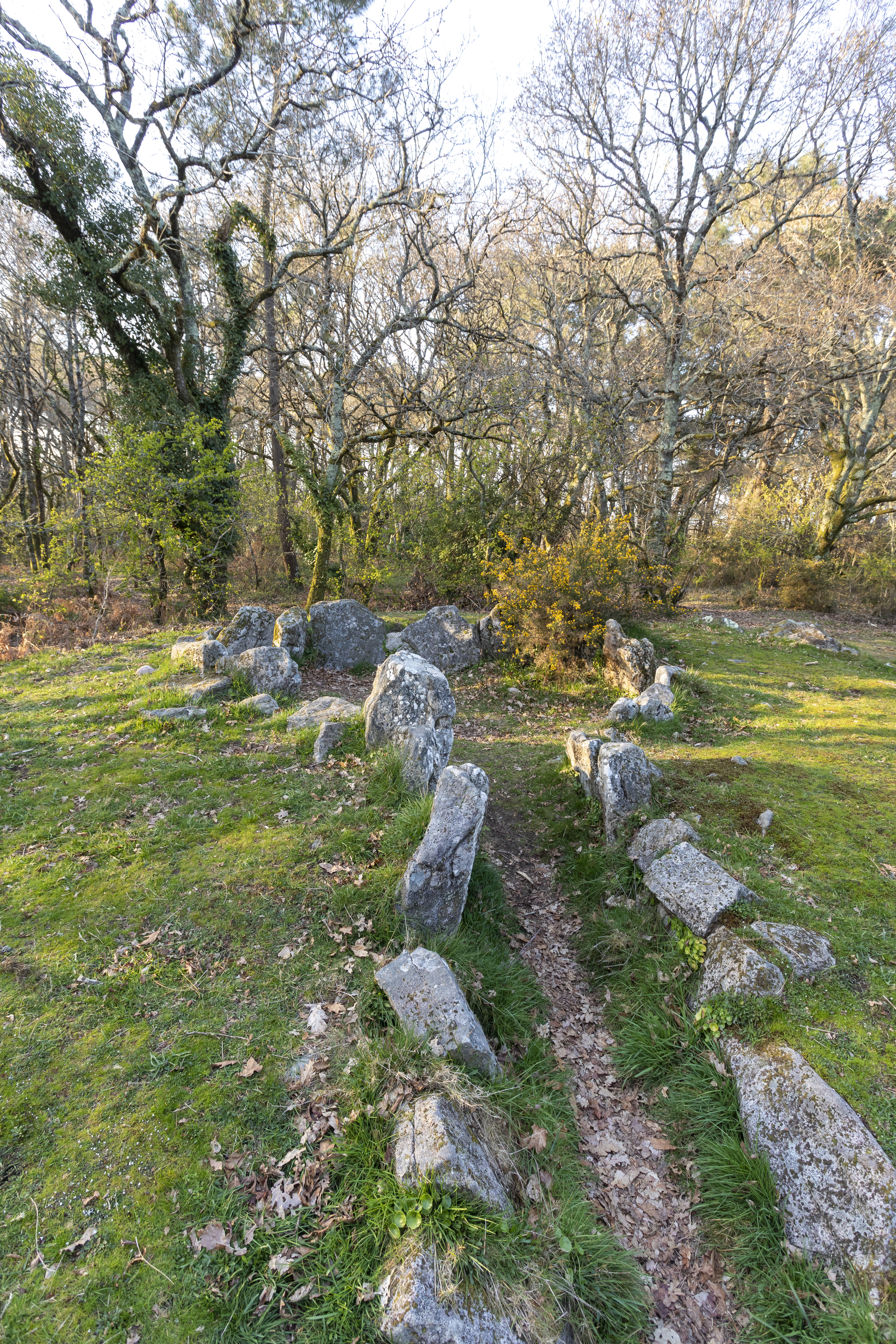This passage dolmen has been preserved, together with the base of its tumulus. The tumulus is formed by stones visible at ground level; it reaches a height of 60 centimetres, with an overall diameter of some 15 metres. Built from granite, the dolmen still has 16 of its chamber wall slabs, and a further 18 along the passage. It also still has part of a kerb (a ring of stone slabs surrounding the tumulus). The site is on one of the highest points in the area, in a clearing accessible via a footpath.
In 1871, Abbé Collet explored the site, and discovered some forty small vases. In 1916, Zacharie Le Rouzic also explored the dolmen before having it listed as a historic monument in 1931. On the same occasion, he again excavated the Mané Bogad dolmen and restored it, re-erecting fallen support stones and consolidating others.
